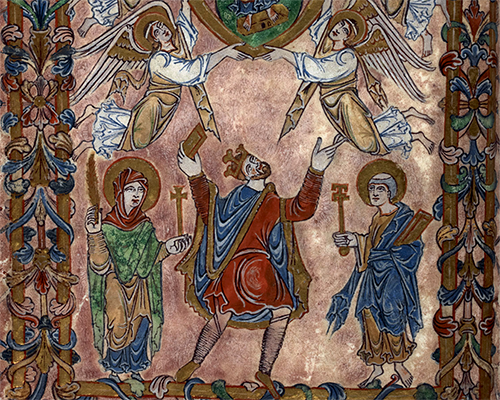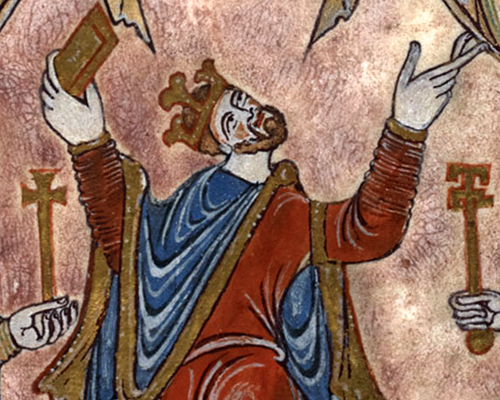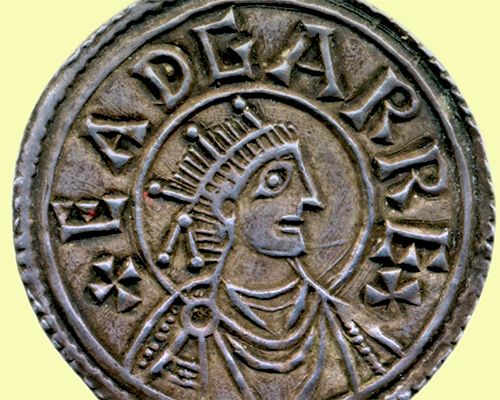Edgar, born in 943, began his rule in 959 as a child, and was not correlated until 973, only two years before his untimely death at age 33 in 975.
Four important aspects of Edgar’s rule:
- He consolidated the unity of England established by his uncle (his father’s much-older half-brother) Aethelstan the Glorious (ruled 924-940) so that England never afterwards experienced a long-term division back into the minor kingdoms (of York, Northumbria, Mercia, Wessex, East Anglia, etc.)
- His coronation as King of England has become the model for coronations, and the oath he gave at his coronation in 973 is the oath still given by British monarchs upon their coronations. The oath required the king to carry out three duties: first, to protect the church and the peace of the land; second, to establish the rule of law and forbid criminally in all classes of subjects, even the nobles; and third, to use justice and mercy in all judgments, which is to say, to be impartial, fair, and not vindictive or cruel, nor to show favoritism or let friends off easily.
- When he was coronated in 973, this was the first time a king was coronated as king of England. When his uncle Aethelstan had united the various kingdoms of Wessex, Mercia, Northumbria, and East Anglia, this was achieved over time, whereas Edgar came to power as King of a united England.
- Edgar was interested in supporting the church, reforming the government, and giving power to good men. Edgar divided England into shires. This was an important milestone in local governance in England.
Edgar was the younger (much younger) brother of Eadwig (ruled from 941-959), and they were both sons of Edmund I, who was himself the eldest son of Edward the Elder and Eadgifu, Edward the Elder’s third wife. Thus, Edmund (Edgar’s father) was Alfred the Great’s grandson, and Edgar was a great-grandson of Alfred the Great. Edgar was the father of Edward the Martyr (ruled 975-978) and Aethelred The Badly-Counseled (“Aethelred the Unready”, who ruled 978-1016). He was thus the grandfather of Edmund Ironside (ruled 1016) and Edward the Confessor (ruled 1042-1066).
Links about Edgar:
- The genealogical website Gini collects many sources available on the Internet that describe Edgar.
- The National Archives in the United Kingdom has a classroom lesson designed around a charter in which King Edgar granted some land.
- The British Library has a good article written by Alison Hudson that describes the development of England and mentions King Edgar.
- Nicholas Brooks is a historian who has written about English history in the 10th century, and his book Anglo-Saxon Myths: State and Church, 400-1066 has some information about Edgar in it.
- A more significant work of recent historical scholarship on Edgar would be Edgar, King of the English, 959-975: New Interpretations edited by Donald G. Scragg and published in 2008.
- We are also informed by Sir Francis Palgrave’s The History of the Anglo Saxons, first published in 1876.
Photo Gallery of King Edgar.
-
Portrait of King Edgar presenting a charter for one of Bishop Æthelwold’s monasteries to Christ, St Peter and the Virgin Mary (British Library, Cotton MS Vespasian A VIII, f. 2v). This is from a manuscript created in 966 awarding a charter to New Minster.
-
A close-up view of King Edgar
-
A coin minted in the time of King Edgar showing his profile



